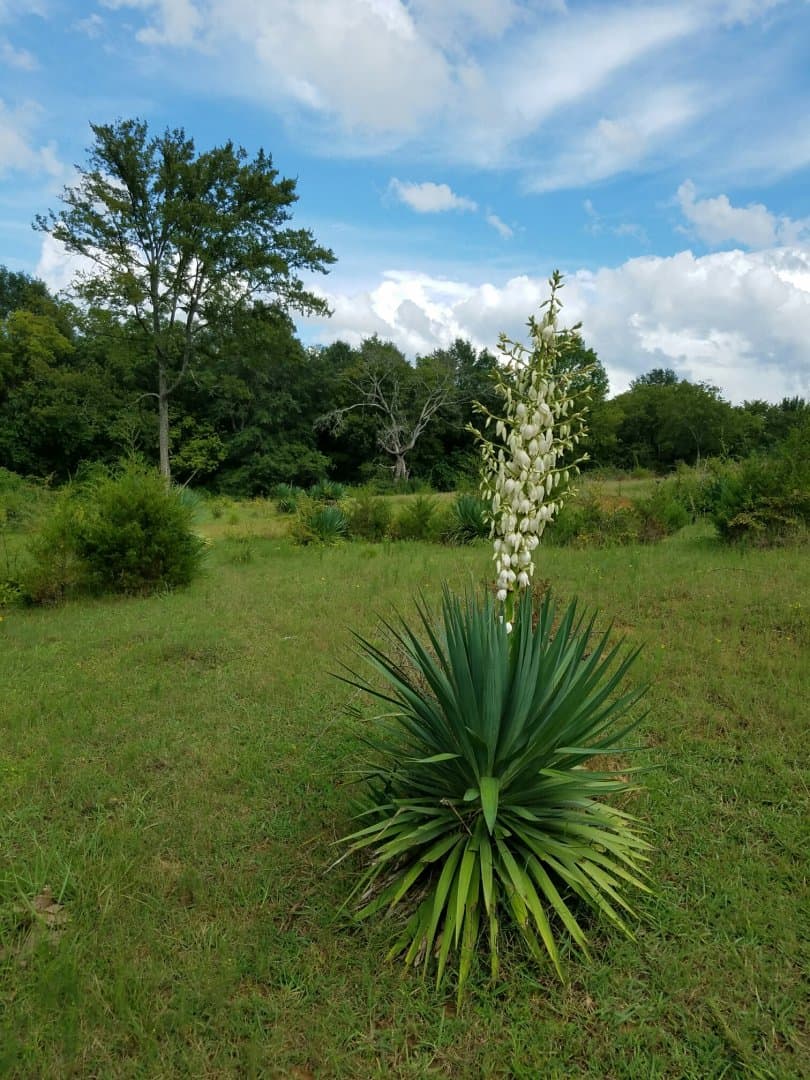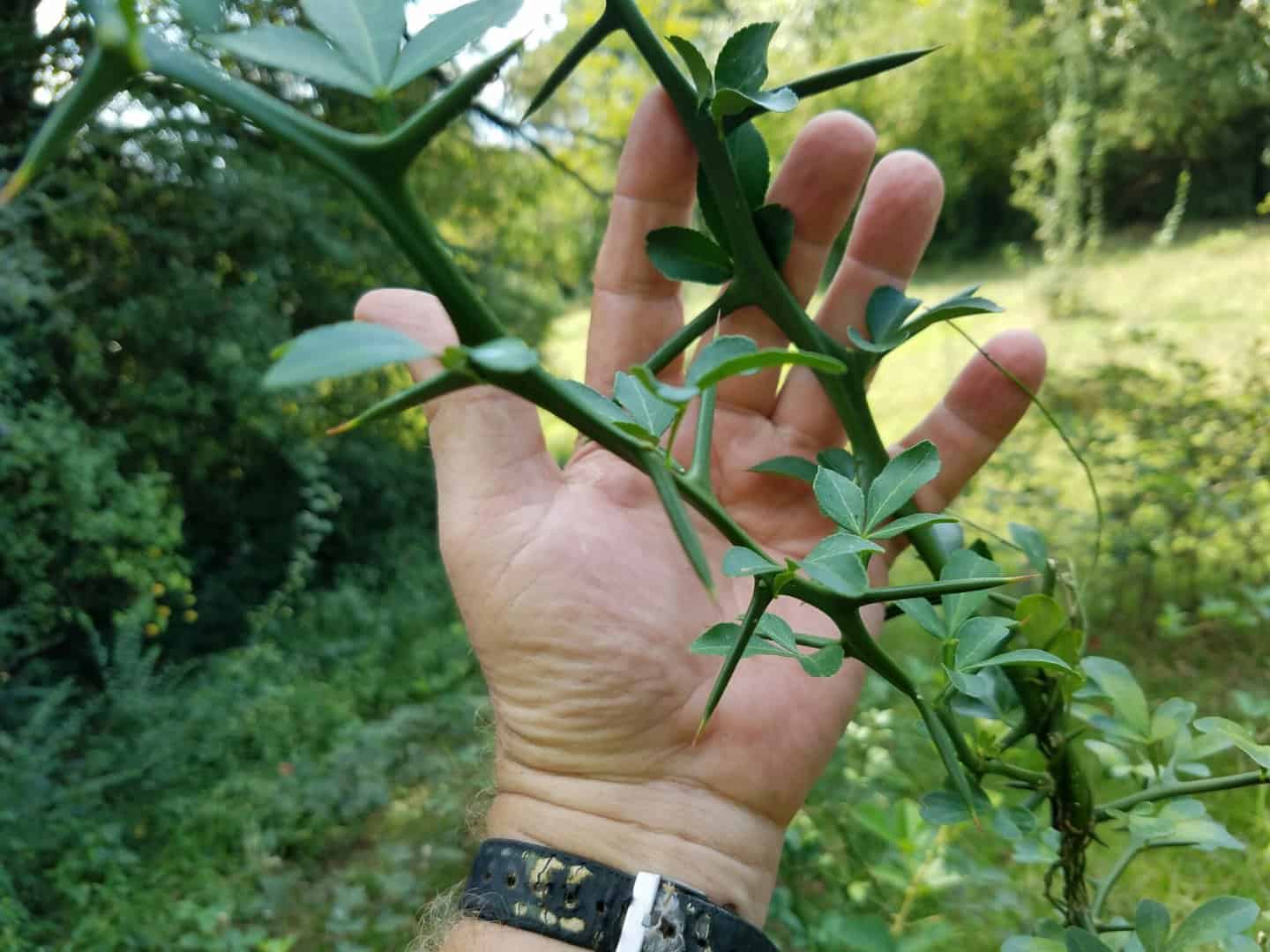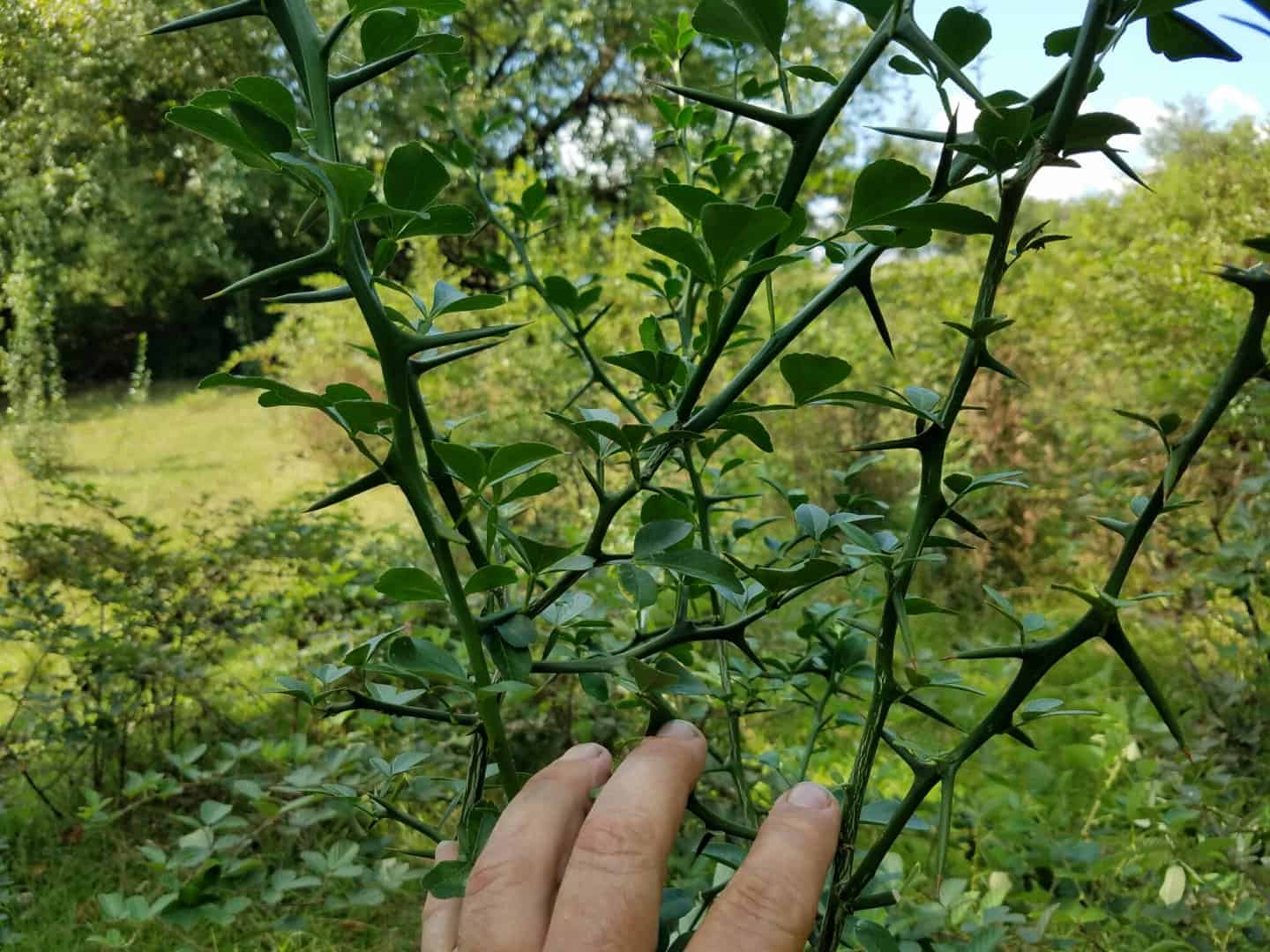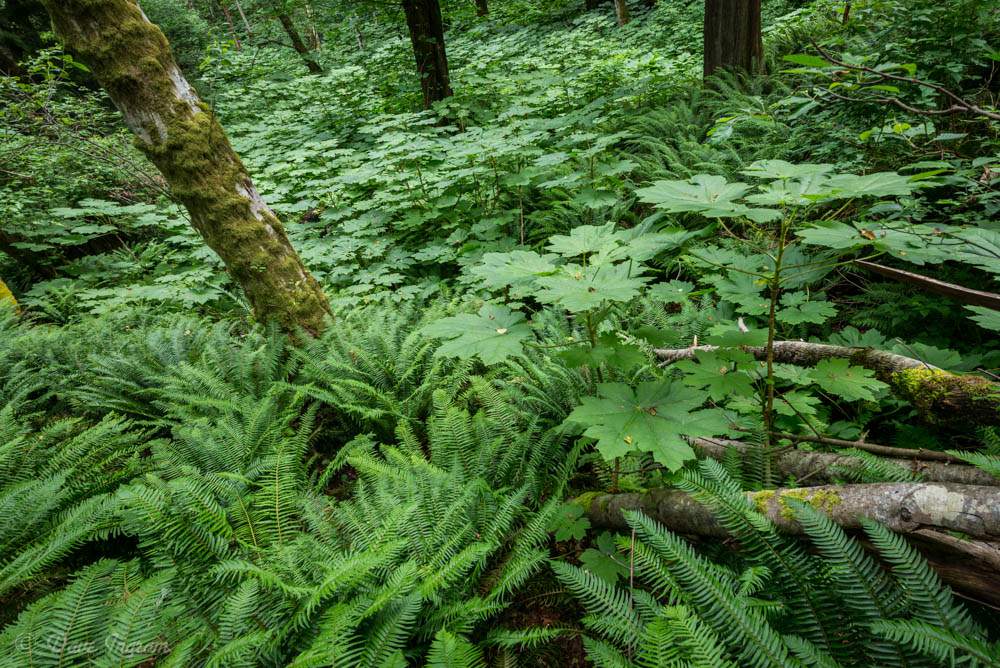

 Here in Northeast Mississippi, we have a few plants and trees with thorns and spikes we have to contend with.
Here in Northeast Mississippi, we have a few plants and trees with thorns and spikes we have to contend with.
Boos-de-arc (bodock, or Osage orange, or ironwood) trees, home locust (with those three-inch plus spiels), blackberry vines, and the painful "devil's walking stick." The hardest to try and power through with a bush axe are bodock trees, blackberry vines that are six feet tall, and kudzu vines, which are not thorny but extremely tough.
We have a few others, too, such as the yucca plant and the haw bush as shown in the picture. The yucca are found mainly around old and new homes, and sometimes just "out in the woods" along with a small, leafy ground cactus with those little hair-like needle clusters that you do not get near. The haw is very tough, and very hard to get through.
Share some of your nightmare plants!
Blackberry briars are a weekly source of discomfort for me this side of the pond. Gorse can be tricky too. I find a slash hook is the best for clearing the briars at least.
Blackberries are ubiquitous here in Oregon. Hawthorne trees are also native to Oregon, they have thorns similar to those pictured. But neither are as nasty as the Honey Locust trees in Oklahoma.
I can get pictures, but my computer is moving slow, so if you will excuse them for now... I deal with prickly pear cactus, jumping cactus, cholla cactus, honey mesquite, honey locust, blackberry, plum thicket, catclaw vine, bull nettle, and horse cripplers. There is also that damn goucho wire, but thats man made. Some of the names are probably local names, and they serve me good enough that I never looked up the real name, cause I didn't care what stuck me.
Your top picture is what we call "Spanish Bayonets". You have to add Cherokee Rose to the list. We have what I call "wait a minute" briers too. Catch one of those on the end of your nose and I don't care how tough you are - you're gonna stop.
Andy
Osage orange and locust trees, blackberries, yucca (in rare places), prickly pear cactus and a wide selection of thorny plants for which I have no knowledge of their names other than $&%#(*@^!!& to be avoided.
The second and third pictures showed up on my farm in the fields about 7 or 8 years ago. Had never seen it before. They bear small lemon/orange looking fruit, and will pop a tire. We have multi floral rose, greenbriar, BlackBerry briars, Hawthorne trees and a few others.

Quick note:
Don't use it for TP...:scream:
Adam, post: 390478, member: 8900 wrote: The second and third pictures showed up on my farm in the fields about 7 or 8 years ago. Had never seen it before. They bear small lemon/orange looking fruit, and will pop a tire. We have multi floral rose, greenbriar, BlackBerry briars, Hawthorne trees and a few others.
We call them wild lemon
Wow! And I thought worrying about getting hit by a roach coach, front end loader, or a stoned crane operator flying trusses was hazardous.
CanÛªt you use some sort of incendiary or explosive apparatus to vaporize those things?
I was ready to call for an Agent Orange drop on an area we needed to cross recently.
I'm sure that the others, like myself, also have insects that sting, snakes that bite, animals that bite, sting, or stink,, and assorted "indigenous persons" who also do all the above also.
Nature is not at all as it is most commonly portrayed on TV and in the movies, unless they are telling something like a horror story where they exaggerate everything far beyond reality.
I can't remember the name of the movie now, but there was one made maybe 35 years ago where numerous people ended up dead, one at a time. In each case, a different critter (or several of the same variety) caused the death. Somehow a turtle did something, perhaps knocking over a jar of some deadly liquid or gaseous substance, that killed one character. The snake scene was obvious. There must have been eight or ten people killed off.
I was driving through Oregon while on vacation. We happened upon Proxy Falls. The wife and I went to explore the falls and I fell into a patch of devil's club. That was the only unpleasantness experienced on that trip. What a beautiful place.
Sent from my SAMSUNG-SM-N920A using Tapatalk
The worst plant that I remember in N. Miss. is Bull Nettle.
We have "ketch 'n keep". It's a vine that grows almost everywhere, up to 4" diameter, can be thick enough to pull down big trees.
I has very small, needle sharp thorns that are hooked back toward the base, so it grabs tighter to your clothing or skin as you pull away. The vine is hard and tough, so when you get through it with a machete, it jumps like a coiled spring. I get bloody more often than not when working in the bush.
I had an occasion to walk down a riverbank for a few days, and found that the beavers had been at work. They had been attacking the young trees, biting them off at a sharp angle, making what amounted to a pointed stick between 1/2" and 1 1/2" around and generally about 3 inches high. The beavers had then dug up under the sandy bank to make their homes in places, which caused the bank to sometimes give out under our feet, dropping our feet out from under us, onto the pointed sticks. No one, well, no human recieved serious injury, but I suspect several beavers died from the cussing they were getting.
Monte, post: 390675, member: 11913 wrote: I had an occasion to walk down a riverbank for a few days, and found that the beavers had been at work. They had been attacking the young trees, biting them off at a sharp angle, making what amounted to a pointed stick between 1/2" and 1 1/2" around and generally about 3 inches high. The beavers had then dug up under the sandy bank to make their homes in places, which caused the bank to sometimes give out under our feet, dropping our feet out from under us, onto the pointed sticks. No one, well, no human recieved serious injury, but I suspect several beavers died from the cussing they were getting.
I still have a scar on my left leg from falling on small oak stump that I had just cut. Running from yellow jackets and getting tangled in vines made me trip and fall. When I stopped running I looked down and saw my pants leg gathered up, I pulled it straight and felt it pull out from inside my leg. +/-20 stitches later I'm fine. I'm glad I cut it as short as I did.
Andy
Dang, Andy, here's that same farm thing a 1000 miles apart.
In 1974 I was helping a guy with some cattle in the Flint Hills. While descending a very steep grade I managed to step just perfectly. A dead weed still standing straight despite having been snapped off at a height of about eighteen inches ran up my pant leg, slid past the sock and gouged a three-inch path about a quarter inch to the left of my shin bone. I'm looking at that scar while attempting to hit all the right keys on the keyboard.



